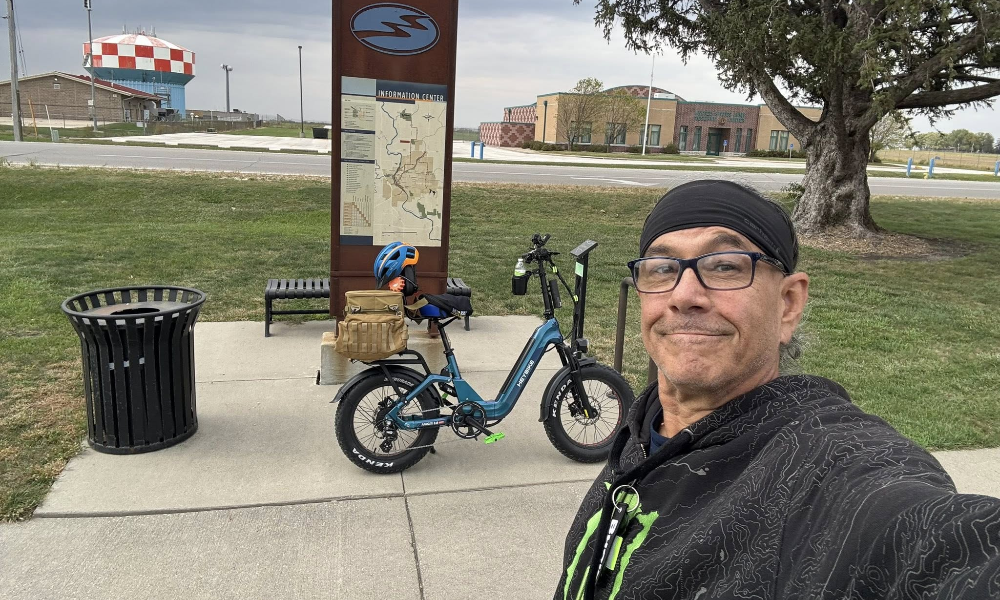What Is Hydraulic Disc Brake?
The hydraulic disc brake is one of the kinds of disc brake. The force is transferred from the lever to the caliper through a sealed fluid in the hydraulic braking system. A master cylinder that stores the brake fluid and a piston are both parts of the hydraulic braking system.
How Does Hydraulic Disc Brake Work?
The hydraulic disc brakes are operated by a closed system of hoses and reservoirs filled with specialized hydraulic fluid. If you pull the lever, the fluid is forced through the hoses and caliper. When you push the pads against the rotor it stops the bike.
The Advantages of Hydraulic Disc Brake
The advantages of hydraulic systems are that, once you have installed them correctly, they are sealed (or closed), preventing water, dirt, or debris from endangering the brakes. Additionally, hydraulic brakes have a powerful gripping force and a silky smooth sensation at the lever.
1. Maintenance and Elite Feeling
The main benefit of a hydraulic system is its incredible stopping and stooping power on off-road trails. The hydraulic disc brake is superior to everyone else in this industry in terms of sensitivity, efficiency, and dependability.
The braking mechanism in a hydraulic system operates through fluid, which has a tendency not to compress. And it feels more precise. The medium for hydraulics is fluid.
2. Applying Force
A hydraulic brake is only a push to stop your sweetheart, whereas a mechanical brake requires more pressure to achieve the same force. However, compared to other systems, the suffering proportion in a hydraulic system is almost 10%.
3. Price
Many mechanics believe that hydraulic brakes are expensive. But that is not accurate in all circumstances. Additionally, the cost of hydraulic maintenance is nearly free. Change the fluid after a given amount of time.
4. Weight
Hydraulic braking systems are much lighter than other brakes.
5. Efficiency and Compatibility
One of the primary advantages of choosing hydraulics is that it is dependable in every weather condition. Fully hydraulic disc brakes are by far the definitive performance champion. They have greater power, better control, and are typically lighter. They transfer force from the lever to the caliper more effectively than other systems, which accounts for a large portion of their performance advantage.
How to Adjust Shimano Hydraulic Disc Brake?
To do this, adhere to the procedures below.
Make sure your bike is well-lit and in a straight position.
Your work will be easy if you place the bikes properly. It makes it simple to service your bike's brakes by allowing you to spin the wheels. By placing your bike on the stand, you can look into the caliper you need to align your disc brake. However, a more laborious method of turning your bike upside down also works if you do not have a stand. The second thing is your bike receives adequate lighting. It will enable you to see clearly and precisely set your disc brake.
Turn the brake caliper bolts loose completely.
It is about time to mount and line your brake calipers. The caliper must first be turned to the bottom and then fully turned back up. Once the caliper is in the appropriate location, you can quickly tighten the caliper nuts by doing this. Also, use caliper bolts with washers on the heads since calipers without washers tend to move in the direction of the tightening bolt.
To align the caliper, tighten the brake lever.
The brake caliper bolts have now been slightly loosened. It enables you to manually regulate the caliper to prevent it from being trapped or hung up on something. Clasp firmly the brake lever to center the caliper. You should slightly tighten the caliper bolts, though. There will be no need for excessive caliper bolt compression.
Center the caliper.
The next step is to spin the wheel of your bike to see if the brake pads and rotor are coming into contact. If you need to realign calipers, you must carefully examine how each piston travels. After this stage, calipers typically demand a little more mastery. But this method of centering the caliper is an excellent beginning.
Use a tool for caliper placement.
The next step is optional and only beneficial for people who find working with their hands uncomfortable.
Use your hand to align the caliper.
Many riders typically favor this approach when it comes to correct adjustment. Using your hand to align the caliper on your bike is more practical.
Straighten the Rotor's bend.
When the rotor is slightly curved, it can sometimes be difficult to center the calipers. In this circumstance, you must first straighten the rotor.
Conclusion
Hydraulic disc brakes are the most effective in terms of performance. Try hurtling down a hill at top speed and braking with rim brakes, then compare that to hydraulic disc brakes. You will notice a noticeable difference in performance. The distinction is stunning.
Latest Stories
3000 Miles of Pure Joy: Greg’s Story with the Heybike ALPHA | Heybike Community
At 68, Greg conquered 3000 miles on his Heybike ALPHA ebike through Minnesota's trails. Every ride brought him fun, fitness, and freedom!
Freedom on Two Wheels: Ryan's Thrilling Rides on Mars 3.0 | Heybike Community
Ryan Davis shares his riding story on Heybike Mars 3.0 ebike. Have a look at his all-terrain adventures to see how the Mars 3.0 brings him true freedom.
From Walker to Rider: Darrel Rediscovering Youth and Joy on Ranger 3.0 Pro | Heybike Community
At 59, Darrel Abbe found youth and joy again riding the Heybike Ranger 3.0 Pro electric bike with his wife. Explore their story and the thrill of e-biking.



Share:
How Does Hydraulic Suspension Work
Choosing Cruiser E-Bike for Beach Riding